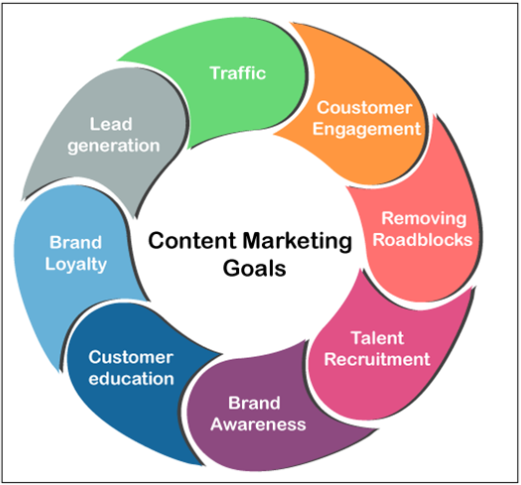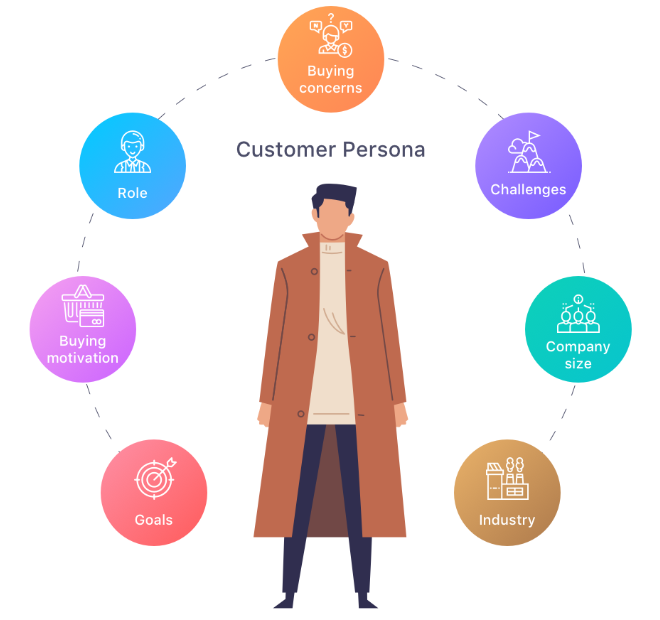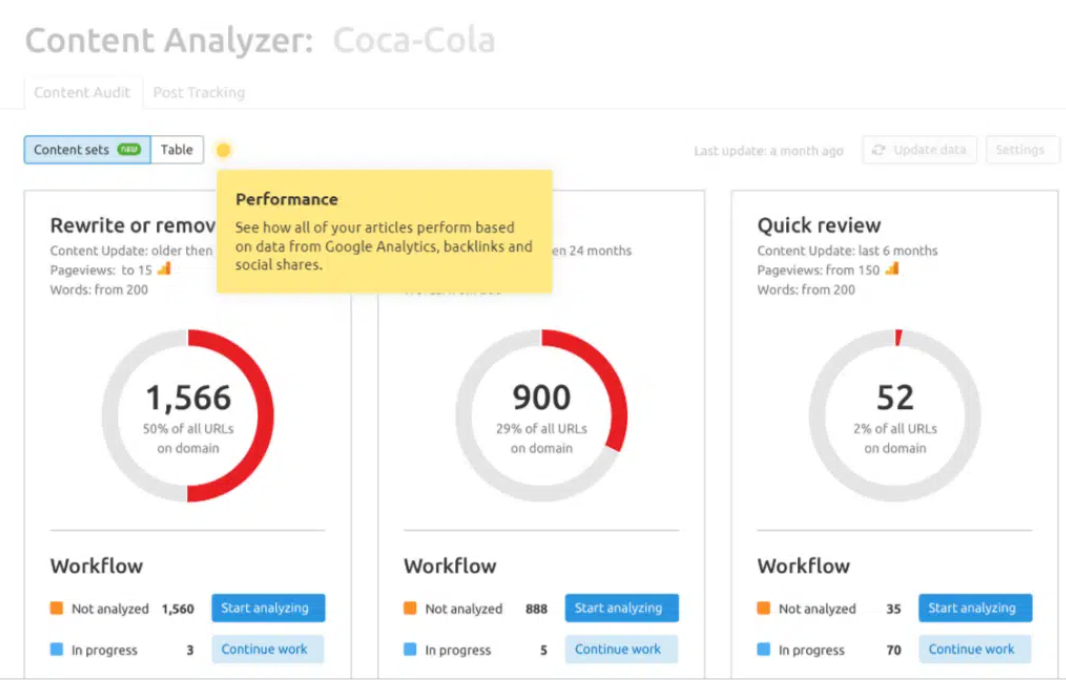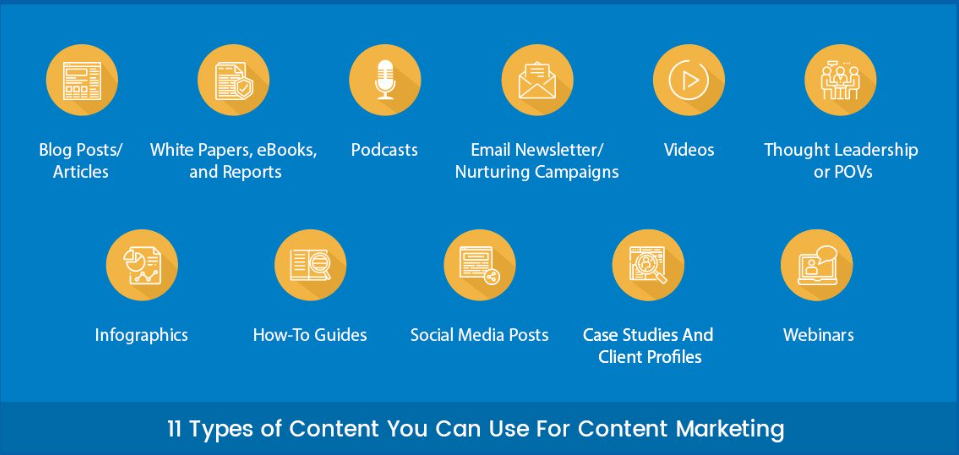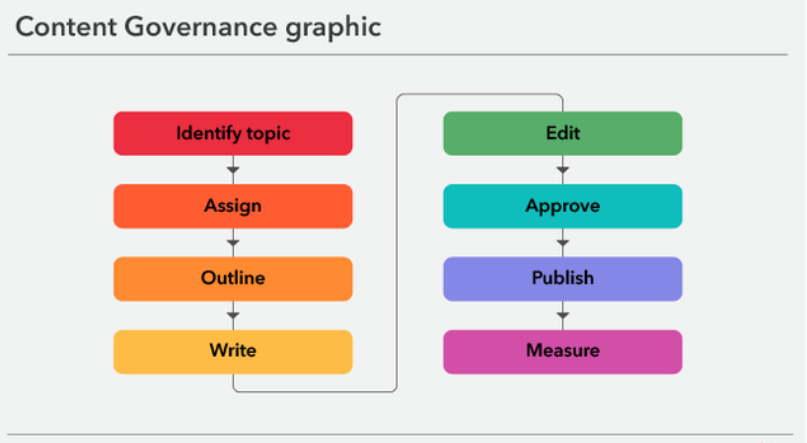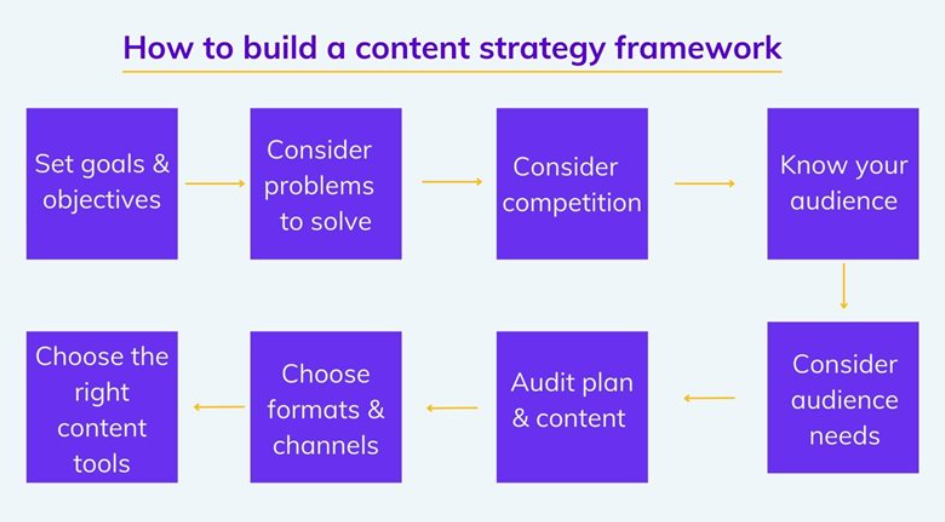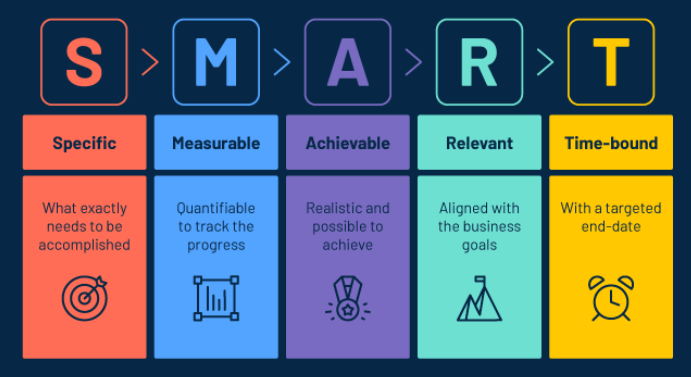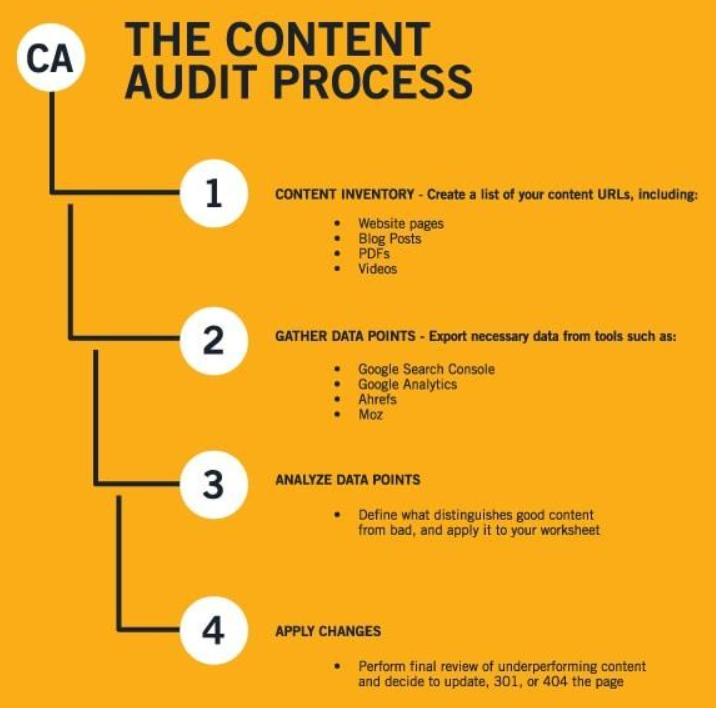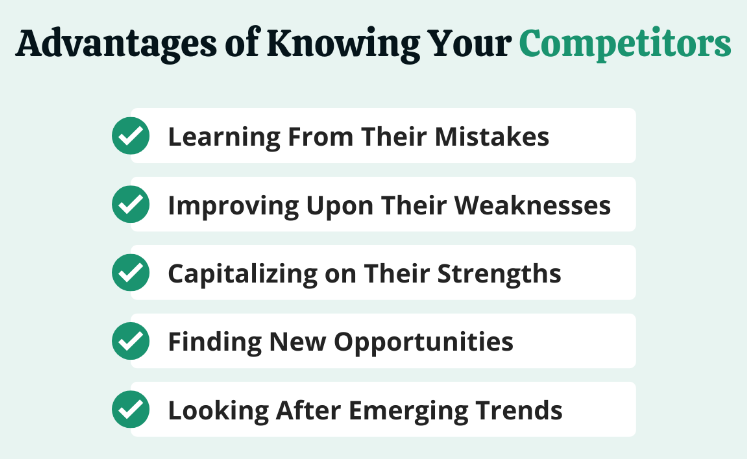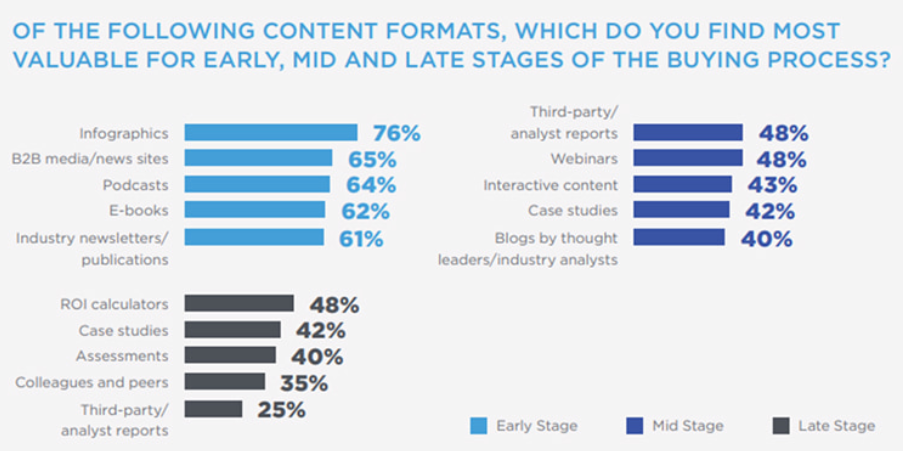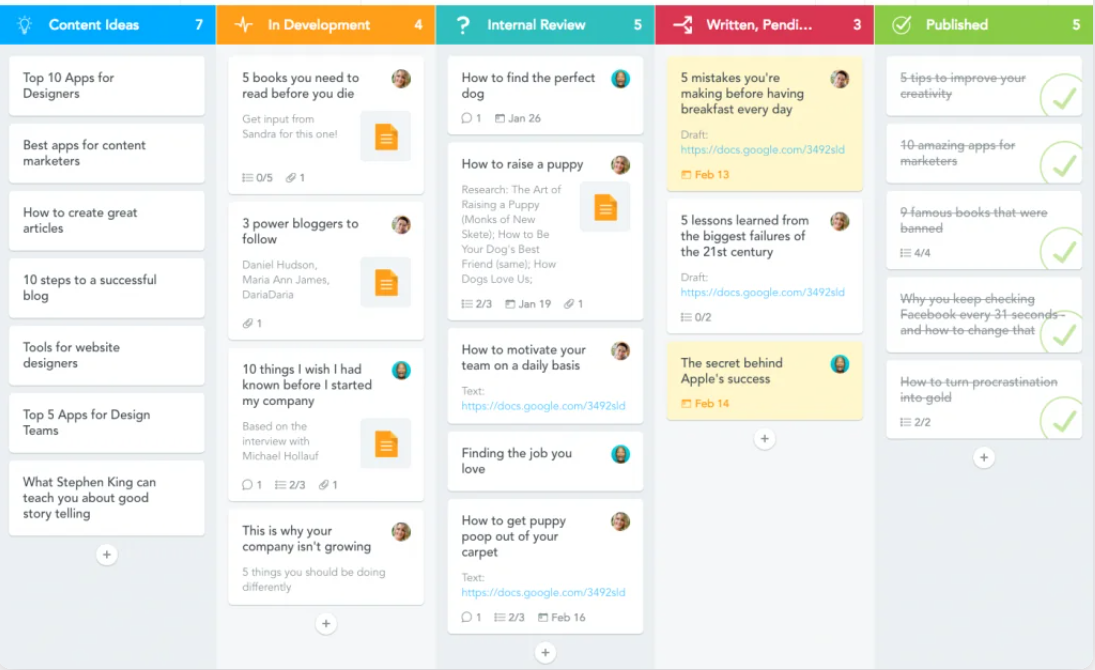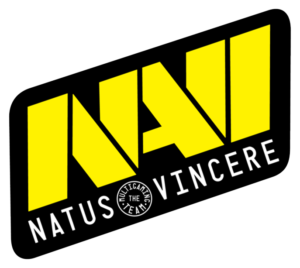
7 Easy Steps to Create a Content Strategy for Your Website

A strong online presence drives a business’s success in a digital world, and quality content is a solid foundation for it. It’s not without reason that 90% of marketers make content a part and parcel of their marketing strategy to reach their target audience better.
Yet, any approach or methodology proves to be efficient only when thoroughly planned and done right. The same is true for content creation. It’s not enough to generate informative and usable content; it’s essential to produce and promote it strategically to maximize its converting effect.
So, it’s critical to make a content strategy for the website to ensure your online presence is effective, engaging, and aligned with your business goals. A well-defined content strategy helps attract and retain a clearly defined audience while simulating profitable customer action.
In his guide, we’ll walk you through the key steps to develop a robust website content strategy that will help you get the most out of your marketing efforts.
Why Should You Develop a Content Strategy for a Website?
A website content strategy is a comprehensive plan that defines how to generate, deliver, and manage content across your website to match your specific business goals and meet user needs. In a word, it’s a structured outline embracing the content topics and types along with the dates of their publication on the website or distribution through other digital channels. In practice, though, it translates into strategic website planning that encompasses valuable and relevant content creation, publication, and governance aimed at:
- Guiding and coordinating your marketing team’s work to catch up with your business’s short-term and long-term objectives, be it enhancing brand awareness, generating leads, increasing sales, or boosting revenue;
- Understanding your user needs to come up with content that resonates with your audience and increases the likelihood of engagement;
- Streamlining resource allocation to maximize content efficiency without going overboard with time, effort, and budget;
- Maintaining content consistency to build trust and recognition among your audience;
- Optimizing for search engines to amplify visibility;
- Improving content quality to establish your website as a credible and authoritative source of info.
Web Content Strategy Benefits
A strategic content plan serves as a benchmark for your further content marketing efforts and activities are not chaotic and perfectly maintain your company purposes and objectives. The most common benefits of the website content marketing strategy you’ll reap for your business include:
- Higher organic traffic to a website and increased user engagement;
- Higher conversion rates;
- Cost-effective marketing, entailing lower costs as compared to traditional advertising;
- Improved customer loyalty;
- Competitive advantage in a crowded market.
Given these benefits, it’s no wonder that over 54% of companies plan to increase their content marketing budgets in 2024.
What Makes a Perfect Content Strategy for a Website?
Content is a powerful tool that works at every stage of a marketing funnel. When masterfully juggled by an experienced digital marketer, it can not only drive traffic to your site and enhance user experience but also fuel the inflow of potential customers and strengthen your brand reputation.
However, to plan content strategically and gain desired results, you should clearly understand the key components of an effective and viable content strategy for the web.
Goals and Objectives
Unless you know what you want to achieve with your content, you won’t be able to select appropriate content strategy tactics and choose the right website content strategy for your business. So, your goals and objectives are a guiding light for your further choices, actions, and activities that will help you stay on track and move in the right direction.
According to the CMI Report, there are three most common content goals:
- Brand awareness;
- Credibility and trust;
- Audience education.
You might also seek to increase revenue, establish industry authority, fortify customer retention, etc.
Target Audience Personas
The next step in knowing why you create content is to understand who you create content for. This will help you spot suitable content ideas and pick matching content formats to hook your potential customers, draw them in, and successfully lead them through the sales funnel.
Your target audience persona is a generic representation of your ideal customer created based on your current customer data analysis. The aspects to consider for developing an accurate buyer concept include:
- Demographic information (age, gender, location, income).
- Psychographic information (interests, values, lifestyle).
- Behavioral data (buying habits, online behavior).
Content Audit
Before creating new content, you should estimate the current state of your website’s content by looking into its performance and reviewing such metrics as page views, time on page, bounce rate, and conversion rates.
This way, you’ll be able to
- Identify high-performing content types;
- Discover areas for improvement;
- Detect content gaps and pitfalls;
- Further create SEO-optimized content that resonates with your audience and search engine algorithms alike.
Content Planning
Your content audit will help you pinpoint which content forms work best for your audience and make up your mind on the types of content to create. You should also decide on topics to cover and the frequency of publication. The core principle to stick here is that content should align with your business goals and address the needs of your audience.
Statistically, blog posts are currently the most popular content format, with an average blog post hitting around 1,500 words. Thus, businesses that blog gain 67% more leads monthly than those that don’t.
Content Creation
This stage of your web content strategy process embraces generating content ideas that will engage your audience and support your goals. To come up with compelling and up-to-date topics that will captivate your potential customers and provide solutions for their problems, you can leverage keyword research, competitor analysis, and audience feedback.
Remember that only quality content counts both for your audience and for search engines. Converting copy should be research-based, accurately sourced, well-structured, and informative. Besides, take care of maintaining a unified tone and voice associated with your brand. By adding images, videos, and infographics, you’ll further enhance engagement.
Content Governance
To ensure consistency and quality across all content, you should develop guidelines for content creation, approval, and publication, including brand voice, writing style, and formatting rules.
Besides, you should define who is responsible for each aspect of the content strategy. Assigning roles helps streamline workflows and ensures accountability.
7 Steps to Create a Website Content Strategy Effective for Your Business
Every business and brand is unique, and so are the industries and niches in which they operate. Hence, there is no one-size-fits-all content strategy you can use as a template. However, there is an algorithm for how to create a content strategy for a website that embraces a few common steps. It’s a so-called content strategy framework you can adapt, tailor, and customize to your individual business needs.
1. Set Goals
Goal setting is a primary step to take to fine-tune your whole strategy and set the right foundation for its development. So, you should clearly define what you want to achieve with your content. For this, some research on your business sales, revenue, scaling, and growth metrics is required.
Besides, your goals must be well-reasoned and tangible, which is possible if you rely on the SMART framework. This will help you set Specific, Measurable, Achievable, Relevant, and Time-bound goals that are easier to realize and monitor.
Steer away from too general and vague goals. Move from smaller aims and objectives to bigger purposes. For example, instead of traffic boost and lead generation, which sounds too abstract, go for “Increase website traffic by 20% in the next six months” or “Generate 50 new leads per month through content marketing.”
2. Research Your Audience
Understanding your target audience helps create audience-focused content that resonates with them. At this point, you should outline your buyer personas by:
- Identifying and analyzing your target customer needs and pain points;
- Determining what problems they try to solve and aims to accomplish;
- Looking into what motivates them and stimulates for action;
- Considering the types of content and topics they prefer;
- Tracing their behavior and habits;
- Investigating questions they ask and keywords they use for online searches.
Studies show that 56% of brands leveraging buying personas generate more qualified leads. Yet, even if you already have well-defined audience personas split into groups by certain metrics, you should do market research annually to refine and expand your buying persona parameters and consistently extend your customer pool.
3. Analyze Your Existing Content
To create new content that will work to the max and reliably bring desired results, it’s essential to look back at your previous content performance and marketing efforts outcomes. This will help you diversify your content formats and types to churn out a perfect mix of content forms that will match your immediate business aims and create a web content strategy that will catch up with evolving brand needs.
To conduct an effective content audit that will provide valuable and helpful insights, you should:
- Review your current content types and check how they perform;
- Consider content formats page titles, headings, word counts, and topics used;
- Identify high-performing content and analyze what makes it rank high;
- Check content quality and relevance;
- Highlight the gaps that need to be filled;
- Detect opportunities for improvement.
Based on the data you gain from your content audit, you’ll be able to reveal points and aspects that define the success of your content and contribute to the overall efficiency of your website content strategy.
4. Check Your Competitors’ Approaches
In a digital realm, the competition is fierce and knowledge of your competitors’ strengths and weaknesses is everything. Analyzing competitor website content will enable you to understand what works in your industry and help you identify opportunities to stand out.
5. Determine Content Types to Produce
Choosing the right content types ensures you meet your audience’s needs and preferences. Use your content audit insights to guide your choice, yet don’t stick to a single content type even if it performs excellently. Diversity is the key. Plan a mix of content types to keep your audience engaged and cater to different stages of the buyer’s journey.
6. Create Quality Content
When you’ve decided on content formats and types, you should pay attention to producing quality copy to attract and retain your target audience and support them through the entire buyer’s journey. Quality content should be:
- Meaningful and informative;
- Authentic and valuable;
- Well-researched and comprehensive;
- Up-to-date and accurate.
It should match one of the four categories of search intent (navigational, informational, commercial, or transactional) depending on the marketing funnel stage, be relevant to your industry, niche, and business specifics, and align with your potential customers’ aspirations.
Also, ensure your content is readable and well-structured. Maintain a consistent tone and voice that reflect your brand. Incorporate SEO best practices, including keyword optimization, meta tags, and internal linking, to make your copy searchable and visible on the web.
7. Publish and Track Performance
You won’t achieve the desired results when publishing content randomly. It’s best if you create an editorial calendar to schedule and manage your content.
This way, you’ll be on top of your content production and guarantee your website is consistently replenished with a well-balanced and valuable copy.
Don’t publish your content in a set-and-forget manner. Regularly track its performance to timely iterate, update, introduce new ideas, and continuously refine your web content strategy. Monitor key metrics like traffic, engagement, and conversions. Gather feedback from your audience to understand their preferences and estimate their satisfaction.
5 Questions a Well-Developed Website Content Strategy Should Answer
How to make sure you churn out an effective, viable, and comprehensive content strategy? An easy and quick way is to check whether you have answered five simple yet important questions.
1. Who is your target audience?
The strategy should define primary and secondary audiences and tailor content to address their specific needs and preferences.
2. What messages will you communicate?
Identify the core messages you want to convey and the main themes that will resonate with your audience while ensuring they align with your brand values and objectives. A good content strategy should engage new prospects and work to retain existing customers.
3. What content types will you produce?
While some types of content might generally perform better than others, it doesn’t mean you should focus solely on them. Instead, you should look for your own perfect content blend that might embrace several formats. Your aim here should be to deliver to varying customer needs at different points in their buying journey.
4. How will content be distributed?
Determine the channels (social media, email newsletters, SEO, paid advertising, etc.) for distributing and promoting your content. Cross-promotion and content repurposing are other viable practices to consider. Besides, the whole approach should deliver to your audience’s preferences, behaviors, and habits.
5. How will you create and maintain your content?
You should outline and maintain a well-defined workflow for producing quality content. Not only does it include content generation per se but also it covers the distribution of roles and responsibilities between team members, the editorial calendar, and the processes for content approval and publication. Besides, you should remember about regular updates and audits to ensure the content remains relevant and accurate.
Conclusion
Creating content that will make your brand stand out from the crowd calls for thought-out planning. And establishing an effective website content strategy is a task that calls for dedication, creativity, and strategic thinking, and requires continuous attention. With our guide a hand, you can set up a solid base for your content efforts and achieve tangible results for your business.
However, the entire process can be challenging, unless you have extensive experience in the field. That’s why it might be a good idea to delegate this task to a professional agency like Livepage. As a leading SEO marketing company, Livepage offers comprehensive services that cover all stages of content creation, from planning and implementation to analyzing metrics. By leveraging our expertise, you can ensure your content strategy for a website is effective, data-driven, and aligned with your business goals.





